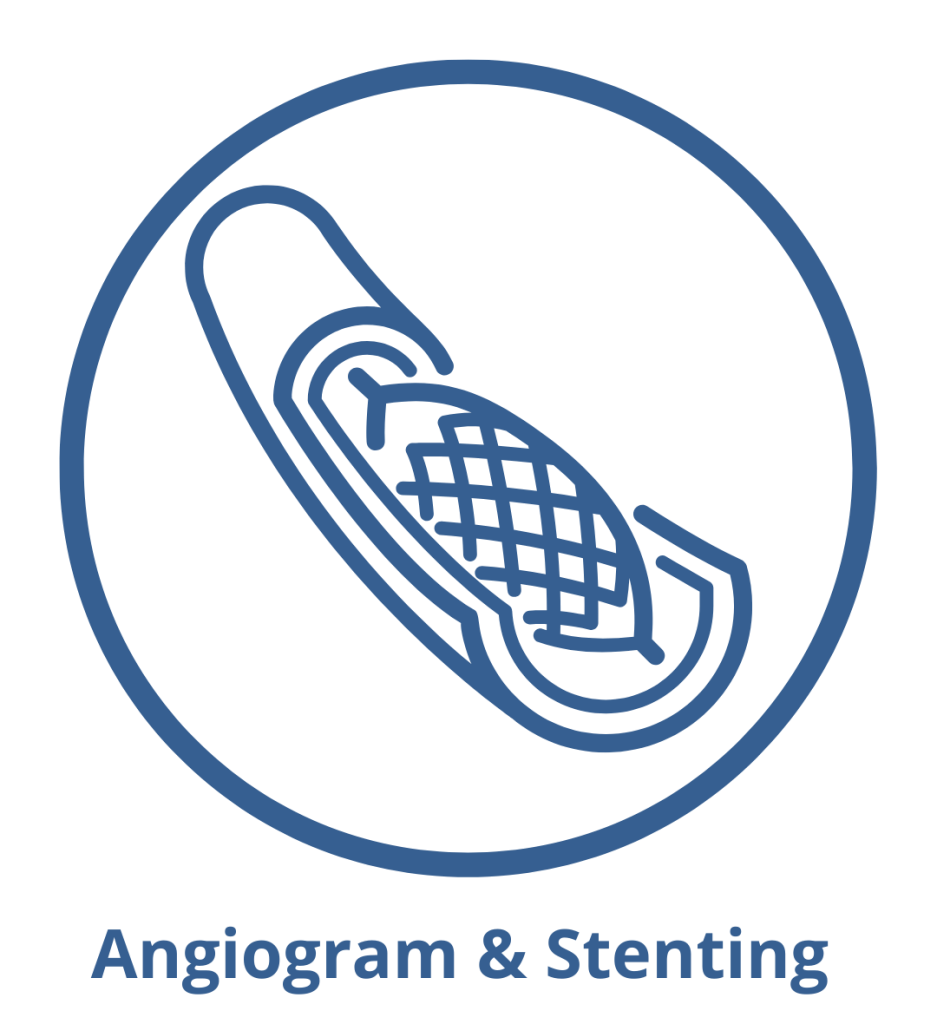Cerebral or Femoral Angiogram
What is a Cerebral Angiogram?
A cerebral angiogram (also known as a carotid angiogram) is an examination of the blood vessels in your neck and brain using x-rays and contrast (x-ray dye).
The contrast is injected through a thin plastic tube called a catheter, which is passed through a sheath inserted into the femoral artery.
Why would I need this procedure?
Your Doctor may ask for this procedure to be performed because you may have experienced some or all of the following symptoms;
- Ongoing headaches,
- Visual disturbances, slurred speech, memory loss.
- Dizziness or fainting not related to your heart.
- A family history of aneurysms or vascular abnormalities.
What can I expect from a cerebral angiogram and how do I prepare beforehand?
Our fact sheet explains what to expect on the day. Find it here.
What is a Femoral Angiogram?
A femoral angiogram is an examination of the blood vessels in the legs using x-rays and contrast (x-ray dye).
The contrast is injected through a thin plastic tube called a catheter, which is passed through a sheath inserted into the femoral artery.
Why would I need this procedure?
Your Doctor may ask for this procedure to be performed because you may experience some or all of the following symptoms;
- Pain in the legs when walking short distances,
- Pain in the legs at rest, especially at night,
- Pins and needles in your extremities,
- Non-healing ulcers on your legs.
A narrowing or blockage of the blood vessel most commonly causes these symptoms.
What can I expect from a femoral angiogram and how do I prepare beforehand?
Our fact sheet explains what to expect on the day. Find it here.
Fact Sheets
Cerebral Angiogram Procedure Fact Sheet
Femoral Angiogram Procedure Fact Sheet
Referral Forms
Contact Us
Procedure Enquiry
Author: Dr John Vrazas MB,BS FRANZCR

